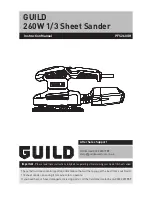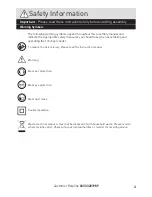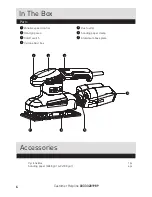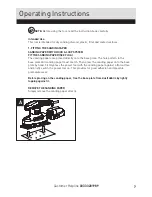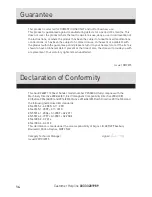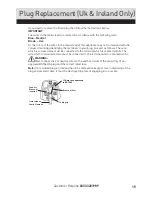
Customer Helpline 0333 3201989
10
Operating Instructions
4. VARIABLE SPEED CONTROL (SEE FIG G)
With the variable speed control (1), the required speed can be selected (also while
running).
The required speed is dependent on the material and is to be determined by a practical
trial.
After longer periods of working at low speed, allow the tool to cool down by running it for
approx. 3 minutes at maximum speed with no load.
5. USING THE SANDER
The workpiece to be sanded must be secured. If it is small or it may move during sanding,
it must be held in a vice or suitably clamped.
Be sure to hold the sander firmly whilst it is on and apply it gently to the work, it may
“kick” on first contact. Hold the sander so that it is flat on the work and move slowly,
preferably with a smooth, circular motion. Regularly check the condition of the sanding
paper and replace when worn for best results.
6. FLUSH SANDING FACILITY
Your sander can sand flush on three sides of the baseplate which allows easy access to
corners and edges of mouldings.
7. ORBITAL SANDING
Your sander operates in small a circular rotation which allows efficient material removal.
Operate your sander in long sweeping movements across your workpiece and even
across the grain. For a finer finish, always use a fine grain sanding paper and only move
the sander in the direction of the grit and never across the grain. Do not allow your
sander to remain in the same position otherwise you will remove material and create an
uneven surface.
8.SELECT THE RIGHT SAND PAPER
Selecting the correct grit of sandpaper is an extremely important decision that will allow
you to achieve the best quality sanding finish.
G
Содержание PFS260GH
Страница 16: ......

